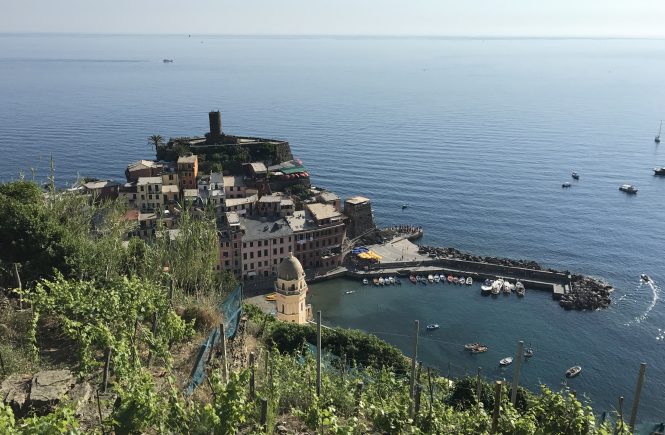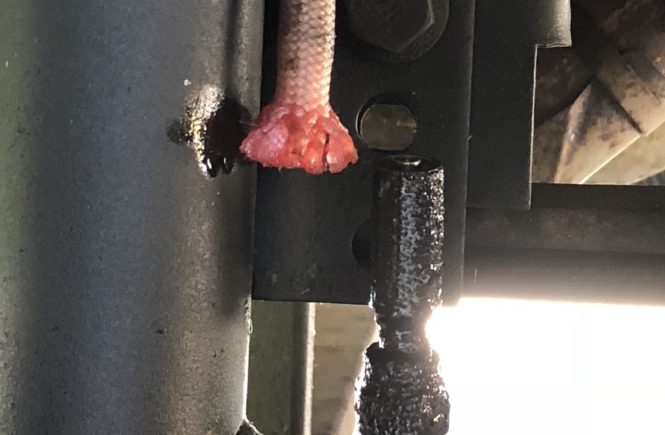…and this is what I learned.
My wife and I recently returned from a 9-day vacation through Rome, Vernazza, and Venice. The trip was originally inspired by Instagram posts by Richard Betts and Sarah Tveidt. Around the first of the year, we started to crunch some numbers and compare work schedules, eventually deciding we could make it work at the end of May. This is a long post, so feel free to skim to the sections you’re interested in.
Preparation
- Phone a Friend – Although I did plenty of googling, my best source of information was an uncle that had lived in Rome for a few years as a seminarian. I spent several hours on the phone with him while taking copious amounts of notes. This was my best source of information and ultimately resulted in an unforgettable experience. If you know anyone that has spent time there, call them up. It will be worth it.
- DK Travel Guides – One of my uncle’s first bits of advice was to get a recent DK Eyewitness Travel Guide. I bought the Italy 2017 and Rome 2017 books for about $30 total. You could probably find them cheaper if you can get them used. Either way, it was probably my best investment. The books provide a comprehensive guide of what to expect when you get there along with recommendations on where to eat and what to see. Reading them provided a great jumping off point for more internet research. Rick Steves and his YouTube videos were also helpful.
- Flights – Once we decided when we wanted to go, I immediately started pricing flights. In order to find the cheapest possible options, I started searching flights in and out of Rome and Venice using Google Flights. I couldn’t find a great way to automate it, so I bookmarked a half dozen searches and then checked them a few times a day to see the trends in pricing. Eventually I figured out which days were going to be cheapest and watched how the prices fluctuated over a month. I ended up booking roundtrip flights out of Minneapolis for about $1200 a piece. I highly recommend booking flights earlier and watching those prices for awhile, as the price was usually around $1600 when I would check and, as you might it expect, more than doubled just prior to our departure. I’m sure there’s a better way to do this, so if you have any recommendations, I’d love to hear them! 2020 Update: Sign up for Scott’s Cheap Flights free email service. They send flight deals several times a week to destinations around the world, often half the price of you would regularly pay. I think I will sign up for the paid service a year or so before our next overseas trip.
- Lodging – After spending a small amount of time looking at the high cost of hotels, we decided to book AirBnB’s for the entire trip. There are some really amazing places to stay when you leave the comfort of a hotel room, often at a much lower price than hotels. My wife spent a few days sifting through the available rooms and picking her favorites so we would have a smaller list to make our final choices from. The AirBnB app makes it easy to mark favorites and share, and this was a really fun part of planning the trip. We decided we had to have an outdoor terrace at each destination, which probably wiped out our cost savings, but made for a great trip!
- Getting Around in Italy – Because we were staying within walking distance of everything we planned to visit, we chose not to rent a car. This would have been unimaginable in all three of our destinations. We walked most everywhere we went while in town, although we did take a few Ubers in Rome, which worked exactly as it does here in the U.S. To get between cities, we booked train tickets a few months ahead of time through ItaliaRail. The website was easy to use, and traveling by train was a joy. We heard conflicting stories about the need to validate tickets before we left. However, our tickets specifically stated that we didn’t need to validate them before getting on the train – they just had to be available for a conductor check (in paper or electronic form).
- Personal Safety and Pickpocketing – Of course, we heard several stories about pickpockets in Europe, so we tried to take the best precautions. We packed light – carrying everything in two rolling carry-on bags and a backpack each. I bought a PacSafe Venture Safe 25L backpack for the trip. It is designed to protect against slashing both the compartment and the straps and has locking zippers. It is a great bag but was probably overkill. I also bought a Hidden Pocket from Eagle Creek. It’s large enough to hold a passport, credit cards, and some cash, and it attaches to your belt and then sits under your pants. I’m not sure this was needed, but it gave me incredible peace of mind. My wife bought a Travelon Anti-Theft Purse. Again, it was slash-proof and just large enough for her passport and phone. It has locking zippers that make it harder to open quickly, and it was the only bag we carried when we left the apartment. We never felt in danger of being pickpocketed.
- Cameras – We decided not to take any special camera equipment along, given that our iPhone cameras have gotten so good. However, despite the shame, we did spring for a selfie-stick. I wouldn’t recommend it. Most of the time, we were too embarrassed to use it, and there was someone trying to sell you one on just about every corner in Italy.
What I Learned
We saw a lot of incredible things in Italy. Coming from a country that is just approaching 250 years old, the history there is hard to fathom – one of our AirBnB’s was built around 1600 and abutted to a palace built around 1100! The point of this post, though, is not to wonder at the tourist sites, but to share our experience and hopefully provide some tips and tactics – so please forgive the omission of my Colosseum pictures.
In no particular order…
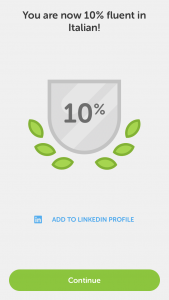 Language – Most of the Italians we met spoke English and communication was no problem. I assume this is mostly because we spent the entire time in popular tourist destinations. About a month before we left, I started trying to learn Italian through the Duolingo app. I kept up with it right up until we left for the trip, not because I was sure I would need it, but because it was fun. Before we left, I was proclaimed to be 10% fluent, but I could barely make out basic Italian conversations when we were there. We also bought Rick Steve’s Italian Phrase Book Book & Dictionary, but didn’t spend much time looking through it. Eventually we realized the best way to introduce yourself was with a “hello” so people would immediately know that you wanted to speak English! The Google Translate app also proved helpful.
Language – Most of the Italians we met spoke English and communication was no problem. I assume this is mostly because we spent the entire time in popular tourist destinations. About a month before we left, I started trying to learn Italian through the Duolingo app. I kept up with it right up until we left for the trip, not because I was sure I would need it, but because it was fun. Before we left, I was proclaimed to be 10% fluent, but I could barely make out basic Italian conversations when we were there. We also bought Rick Steve’s Italian Phrase Book Book & Dictionary, but didn’t spend much time looking through it. Eventually we realized the best way to introduce yourself was with a “hello” so people would immediately know that you wanted to speak English! The Google Translate app also proved helpful.- Cell Phones – My wife and I each have iPhones on Verizon’s network, which we really like. It’s expensive, but Verizon provides the best coverage and fastest data where we live and play. In researching our options for Italy, I found three potential options: (1) turn cellular data off and rely on wi-fi coverage, (2) buy a local SIM card and pay about $30/phone for a set amount of data, (3) extend our current Verizon plan into Italy for $10/day/phone. In the end, we went with option 3 and signed up for Verizon’s International plan. I had read some horrific reviews of trying to use a local SIM card, and I really wanted the ability to use as much data as we wanted. This allowed us to use as much data as we wanted and take no risk with trying to buy a SIM card when we got there. My original plan was to sign up my phone and then use it as a hotspot for my wife’s and my iPad. We ended up both signing up, which cost us $20/day, but the convenience was worth it. Verizon coverage was great everywhere we went, and the ability to use Google Maps at all times was essential. We stored our itinerary and all of our tickets in Dropbox and FaceTimed with our kids every other day, and I tried somewhat to keep up with work, so we ended up using about 3 GB of data while we were there.
- Cash vs. Credit Cards – In comparison to the U.S., Italy is much more cash-dependent. Many places would not accept credit cards, and when they did, you would often get annoyed looks. Also, there was no way to leave a tip paying by credit card, as there is no extra tip line on the paper you sign. By the end of the trip, we were paying cash for almost everything. You also end up with a lot of change. The lowest denomination of a Euro is the €5 banknote, so you end up with a lot of €1 and €2 coins. One nice thing – Italians have a 20% national sales tax, but it’s already factored into the price. So if you buy a €2 espresso, you hand them a €2 coin, and you’re done. I have a checking account with Schwab, which was really nice, as I could get cash at any ATM, and all of my ATM fees are guaranteed to be reimbursed. For credit cards, I used my Capital One Visa and had no issues with foreign transaction fees. However, my Uber account is hooked up to my American Express card, and I later found that I was charged a foreign transaction fee of $1.05 for each ride.
- Coffee – Translate “coffee” into Italian, and you get “caffè”, but order a caffè in Italy, and you get an espresso! Italians are just as obsessed with coffee as we are, but their drink of choice is a shot (1 oz.) of espresso. You will often see Italians walk up to a coffee shop or bar, order an espresso and stand by the cash register while they sip it for a minute or two, before moving on – even in 80˚F weather! Cappuccino was also common. If you want something more like you would get in the U.S., you typically need to ask for an American coffee, or “Caffè Americano” in Italian, which is a watered down cup of espresso. That being said, you can order a Grande Caffè Americano at a Starbucks here in the U.S. and get a 16 oz. drink (2 shots of espresso and
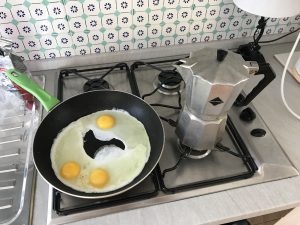 the rest hot water). If you order a Caffè Americano in Italy, though, you get a shot of espresso with about another 3 oz. of water. For someone that drinks a pot of coffee most mornings, this was difficult to get used to! However, we did eventually learn to brew our own Caffè Americanos in our apartment with the famous Bialetti espresso makers, which were staples in every apartment we stayed in.
the rest hot water). If you order a Caffè Americano in Italy, though, you get a shot of espresso with about another 3 oz. of water. For someone that drinks a pot of coffee most mornings, this was difficult to get used to! However, we did eventually learn to brew our own Caffè Americanos in our apartment with the famous Bialetti espresso makers, which were staples in every apartment we stayed in. - Breakfast Sucks in Italy – Despite the fact that Italy shares a border with France, breakfast is completely ignored there. If you are looking for fried eggs and hash browns, you will mostly be out of luck. If you want eggs benedict, you are screwed. We came across a few restaurants in touristy areas that advertised an “English breakfast” that usually included omelets and pancakes, but the quality was not great. Coffee shops often sold small pastries or breads, which appeared to be the normal breakfast (if any) for most Italians. I was warned ahead of time that this would be the case, but it was still the biggest disappointment of the trip. However, by the end of our adventure, we were proficient at brewing (and watering down) our own espressos and had found ways to fry our own eggs and bacon – breakfast on the cheap!
- Pasta and Seafood is Where It’s At – At the restaurants that were recommended to us, the pasta and seafood were always exceptional. Most of pasta is made fresh at the restaurant, and the seafood was always fresh. We had less luck with any cuts of meat, although I’ve heard there are really great steak places in the Italian hill towns.
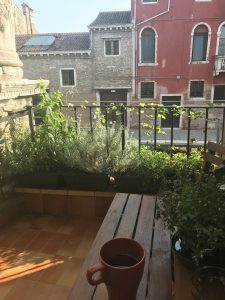
- Cured Meats, Cheese, and Cheap Wine – As I noted before, each AirBnB we stayed at had a terrace. One of our favorite things to do was to visit a grocery store, buy some cured meats (salami, prosciutto, coppa), a wedge of cheese, and a bottle of wine – all of which were very cheap – and take them back to our little terrace. The meats were amazing (we must learn their secrets), the cheeses were great, and the wine was…good enough! More on the wine next.
- Wine – Similar to breakfast, Italians have a different approach to wines. Wines are included at pretty much every meal and considered to be a grocery – a philosophy we very much enjoyed. There is also no wine snobbery going on. Many restaurants had short wine lists, only labeled by the type of grape (varietal) or region (appellation). Italy is known for its localized, unique varietals (e.g. we drank a wine made from Tintilia grapes from the Molise region when we were in Rome, and a wine made from Cabernet Franc from the Trissino region when we were in Venice). My advice: try out the local varietals and choose mid-level wines on the list to explore what is out there. I’ve already checked, and it’s pretty hard to find Cabernet Franc from Trissino here in South Dakota! At the restaurants you can expect to pay €20-30 for a decent bottle of wine and less than half of that at a grocery store. If you are in northwest Italy, throw out my advice, and find the best Tuscans and Barolos you can!
- Service at Restaurants – The process of eating at an Italian restaurant is quite a bit different than here. For one, most restaurants close down between lunch and dinner, from about 4 to 7:30. Then, many will set a table only once per evening, allowing guests to take their time and enjoy a multiple-hour experience. Thus, waiters (which were mostly men) will take your order at the beginning of the evening and then almost never check back with you. Where we might consider that to be bad service, they (I assume) don’t want to rush you or interrupt your meal. As a result, you really need to flag the staff down if you need a refill or want your check.
- Bread at Restaurants – Bread is typically served ahead of your meal, as it is here, but butter and olive oil are never provided. This is apparently because the bread is supposed to be used to soak up any extra sauce on your plate.
- Restaurant Selection – In the tourist-heavy areas we visited, finding a good restaurant was not always easy. Many restaurants were obviously targeting tourists and had substandard food and high prices – you won’t know which unless you do some research ahead of time or actually eat there. We had our best experiences at restaurants recommended by family and friends, internet research (Yelp or Trip Advisor), or the DK Travel Guides mentioned above. On the fly, the restaurants that were empty and had staff actively trying to call you in proved to be the worst. Also, plan ahead and make reservations. We missed more than half of our restaurant recommendations because we didn’t get reservations in time, and they were often booked more than a day ahead of time. I will include a list of our favorites along with those that were recommended that we couldn’t try at the end of this post.
- No Open-Container Laws – In Italy, it is legal to walk down the street with an alcoholic beverage. Many of the newsstands in Rome or the coffee shops/bars in Venice had no problem selling you a beer to walk down the street with. While it is legal, and I drank a few beers on our long, hot walks, it was rare to see anyone else doing it.
- Tap Water in Rome – We drank out of the tap everywhere we went and never had any problems. Rome’s tap water actually had a great taste. Less so in Vernazza, and Venice’s could have been better.
Recommendations
As I said above, plan ahead and make reservations if you want to have the best dining experiences. Thus, here are my recommendations:
- Rome
- Trattoria Polese – Very reasonable prices, good service, and good food. Best calzones I’ve ever had. Located in Campo de Fiori.
- La Scala in Trastevere – One of our best meals in Italy. Try the gnocchi. Located in Trastevere.
- Roma Sparita – Try the Cacio e Pepe (thanks Curtis). Wow. Located in Trastevere.
- Sant’Eushachio Il Caffè – Neat coffee shop near the Pantheon. Try a shakerato.
- Open Baladin – Hidden craft beer bar in Campo de Fiori. Nothing to write home about, but if you need something that actually has hops in it…
- Da Quinto Gelateria – Best gelato I had in Italy, and I had a lot! I recommend banana. Located near Piazza Navona.
- Dar Poeta – Famous pizza place in Trastevere. We never made it there, but it was highly recommended.
- Grazia & Graziella – Another highly recommended place that we couldn’t get into.
- Colosseum – We booked a skip-the-line tour through ItaliaPass, and we loved it.
- Vatican – You could spend several days going through the Vatican Museum and catching events there. We are catholic, so we attended Mass in Italian in St. Peter’s Basilica and attended Pope Francis’s weekly Regina Caeli prayer. PapalAudience.org was a useful resource. We also did an early-morning skip-the-line tour of the Sistine Chapel, again through ItaliaPass. It would have been nice to spend more time in the Vatican Museum, so maybe next time. I didn’t get my request in early enough, but was told the Scavi Tour is a must-see.
- Vernazza
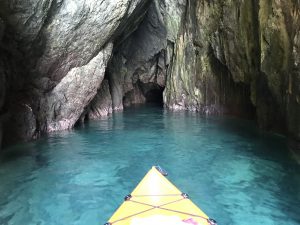
- Ristorante Belforte – Highly recommended to us, but we never made it in. Get reservations.
- Restaurant along the steps to Castle Doria, above Ristorante Belforte – DON’T EAT THERE. One of our worst experiences we had.
- Il Pirata – Another recommendation that we couldn’t get into without a reservation.
- Kayak, hike, boat tour – We rented a double kayak for €60, took a boat tour of the other villages for €100 (complete with a bottle of prosecco and appetizers), and hiked around Vernazza. All were great experiences.
- Venice
- Ostaria da Rioba – Best meal we had in Italy. Scallops were phenomenal, and the wine list was the largest we saw anywhere. Get reservations.
- La Zucca – Another recommendation we couldn’t get into. Reservation might need to be made multiple days in advance.
- Doge’s Palace – We booked a skip-the-line “secret itineraries” tour through Viator. This provided a guided tour through the portion of the palace that includes an attic prison and a torture chamber as well as an account of the famous escape Casanova made from there. Following the guided portion, you are released into the public area, with its fancy artwork and interesting artifacts. You can also walk across the Bridge of Sighs to where the old dungeons were.
- Water buses or Vaporettos – We bought a 48-hour pass to cover the 2.5 days we were in Venice, and it was well worth it. You have to walk everywhere in Venice, and catching these water buses along the Grand Canal made things a lot easier. Timetables were hard to find, but the Google Maps app will provide you directions on what bus line to take and when if you ask for directions and choose public transit.

